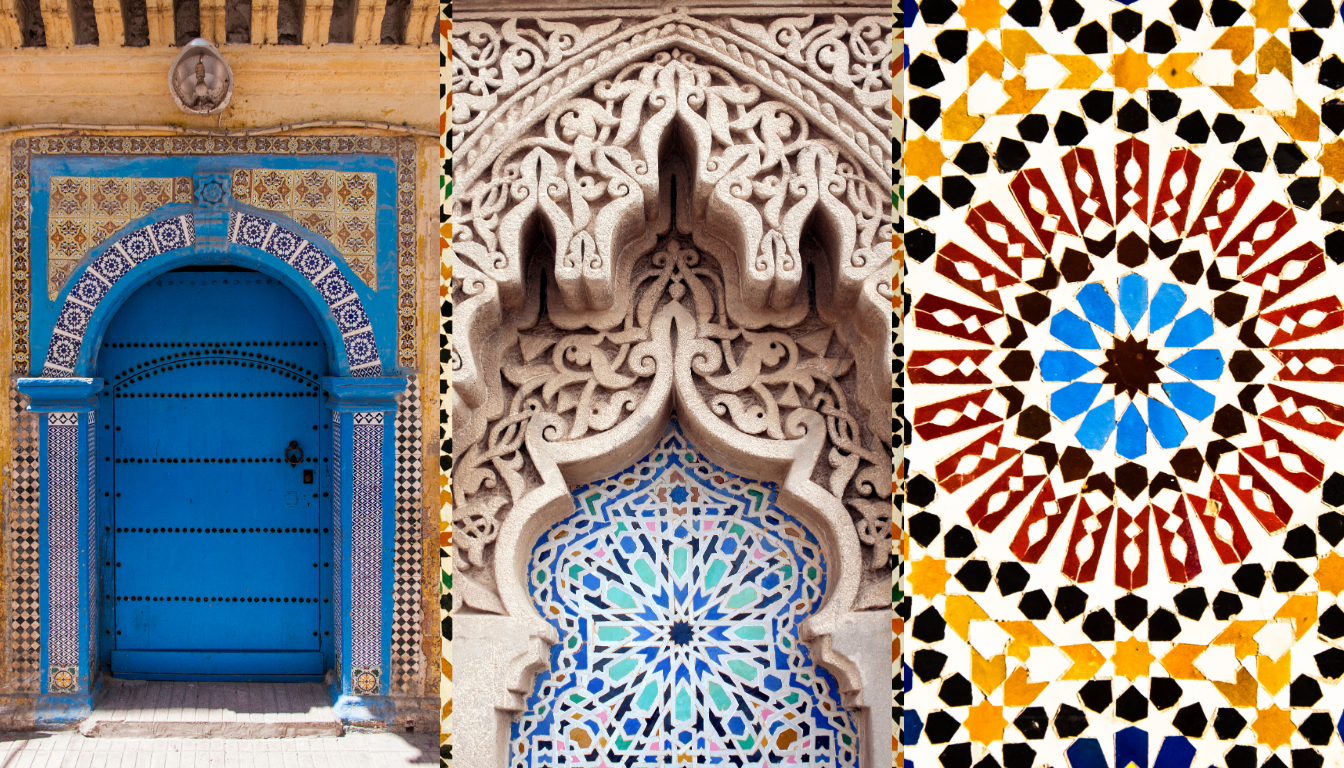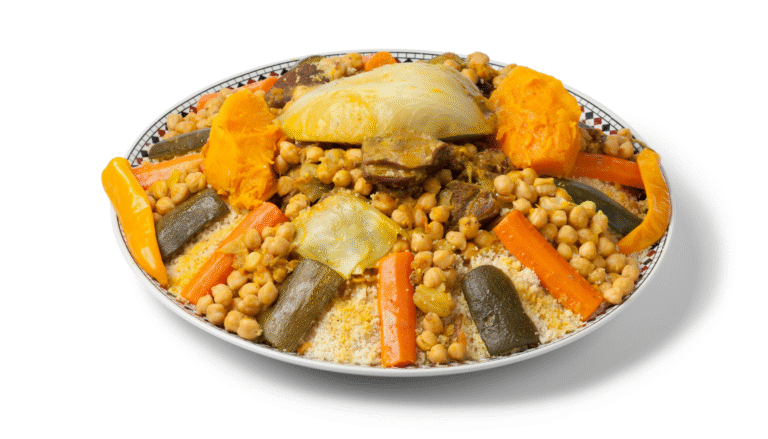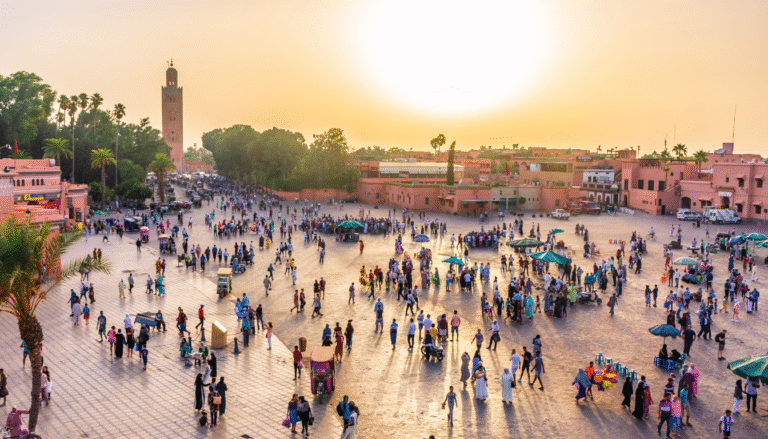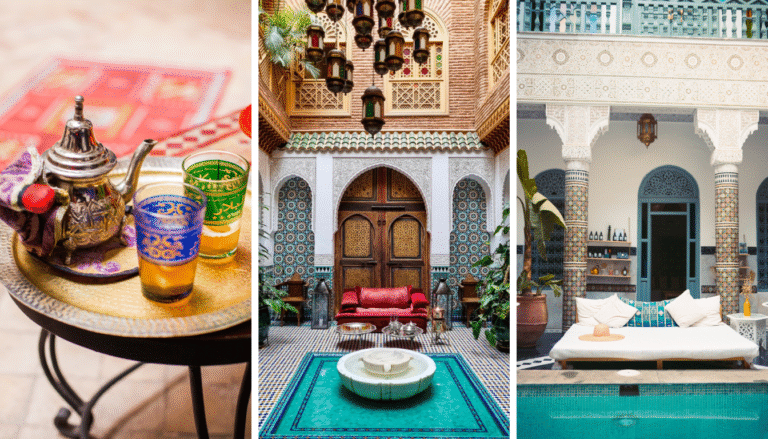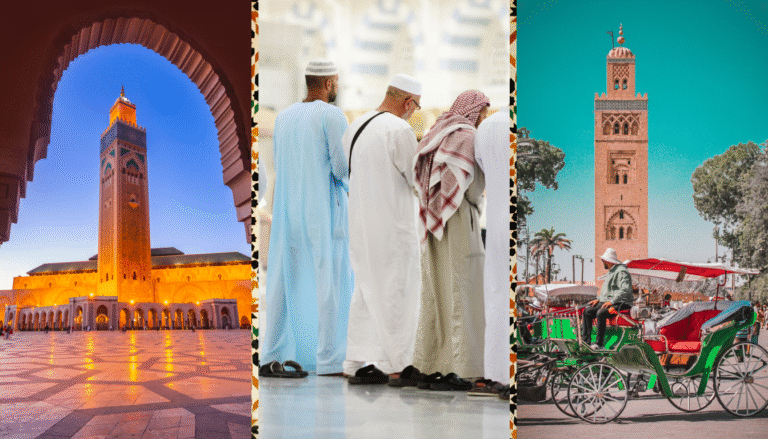Moroccan Architecture And Art: What to Look for in Medinas and Mosques
As you wander through Marrakech or Fez, you’re surrounded by a rich tapestry of design styles. These styles blend traditional and external influences beautifully.
Did you know that the ancient medinas of Morocco are home to some of the world’s most impressive Islamic architecture?
The history of these medinas spans centuries. This unique blend of indigenous and external influences has created a distinctive identity. It sets Moroccan culture apart from its neighbors.
Exploring the medinas and mosques, you’ll find stunning artistic elements. These showcase the best of Moroccan craftsmanship.
The Rich Heritage of Moroccan Architecture and Art
Exploring Morocco, you’ll find its architecture is a mix of Berber, Arab, and Andalusian styles. This mix comes from the country’s location and its history. It has been shaped by many settlers and conquerors over time.
The Fusion of Influences: Berber, Arab, and Andalusian
Morocco’s buildings show a blend of cultures. The Berber influence is seen in the use of local materials and traditional building methods. The Arab influence brought Islamic designs, like mosques and madrasas. And the Andalusian influence is in the detailed geometric patterns and fancy decorations.
The Timeline of Architectural Development in Morocco
Morocco’s architecture has a long history, with many dynasties playing a part. From old medinas to big mosques, each building has its own story. The Almoravid and Almohad dynasties started many architectural traditions. Later, the Saadi and Alaouite dynasties added more to the country’s buildings.
Understanding the Medina: The Heart of Moroccan Cities
Exploring the medina is like unraveling a tapestry of moroccan design styles. These styles have been woven over centuries. As you walk through the narrow alleys, you’ll find a rich heritage of traditional buildings. Each building tells a story of the city’s past.
Navigating the Labyrinthine Structure of Traditional Medinas
The medina’s structure is a testament to its historical significance. Its narrow streets have been shaped by centuries of culture and society. As you wander, you’ll see how architecture has been influenced by different cultures, creating a unique blend of styles.
Arabesque patterns adorn the walls and doors, making the medina visually appealing.
Identifying Key Architectural Features at Medina Entrances
When you enter the medina, look for the distinctive architectural features at the entrance. These often include intricately carved doors and ornate tile work. Arabesque patterns also reflect the city’s rich cultural heritage.
Paying attention to these details will help you appreciate the craftsmanship in these traditional buildings.
Key Elements of Moroccan Architecture Art
The details in Moroccan architecture show the country’s deep culture and art. Walking through the lively medinas and grand mosques, you see a mix of artistic elements. These reflect Morocco’s varied history.
Spotting Geometric Patterns and Understanding Their Symbolic Meanings
Geometric patterns are key in Moroccan architecture. They show the link between the physical and spiritual worlds. These designs are beautiful and carry deep meanings, showing Morocco’s Islamic roots.
Recognizing Different Styles of Calligraphy in Decorations
Calligraphy is important in Moroccan decorations. It often includes verses from the Quran or Islamic texts. Styles like Kufic and Thuluth make buildings more beautiful and spiritual.
Interpreting the Significance of Colors in Moroccan Design
Colors in Moroccan design are more than just pretty. Blue means spirituality, and green means wealth. Knowing these meanings helps you appreciate Moroccan architecture more.
The Magnificent Moroccan Mosques: What Makes Them Unique
Exploring Morocco, you’ll find its mosques are architectural wonders. They are known for their beauty and history. They show a mix of Islamic styles and local traditions.
Identifying the Distinctive Features of Moroccan Minarets
Moroccan minarets stand out, often square and decorated with zellij tiles. These minarets are key to the mosques’ look and the city’s architecture.
Must-Visit Mosques: Hassan II, Koutoubia, and Qarawiyyin
The Hassan II Mosque in Casablanca is famous for its stucco and marble details. The Koutoubia Mosque in Marrakech is known for its tall minaret. The Qarawiyyin Mosque in Fez is one of the oldest universities.
Visitor Etiquette and Photography Rules at Religious Sites
Visiting Moroccan mosques, dress modestly and respect local customs. Photography rules differ; some allow it, others don’t. Always ask before taking pictures inside.
How to Appreciate Zellige: Morocco’s Iconic Tilework
Zellige is Morocco’s famous mosaic tilework. It’s a big part of the country’s rich artistic history. For centuries, it has decorated mosques, palaces, and public areas with its detailed patterns and bright colors.
Recognizing Authentic Handcrafted Zellige Patterns
Real handcrafted Zellige has unique, slightly uneven patterns. When you look at Zellige, watch for:
- Minor imperfections that show it’s handmade
- Vibrant, rich colors from traditional glazing methods
- Intricate geometric patterns that show Moroccan artistic traditions
Where to Find the Most Spectacular Zellige Displays in Morocco
Morocco has many amazing Zellige tilework examples. Some top places to see include:
- The Bahia Palace in Marrakech, known for its stunning Zellige work
- The Hassan II Mosque in Casablanca, with its vast Zellige decorations
- The ancient city of Fez, where Zellige decorates many old buildings and monuments
Visiting these spots will help you understand the skill and artistry behind Morocco’s famous Zellige tilework.
Identifying Arabesque and Floral Motifs in Moroccan Buildings
Exploring Moroccan architecture, you’ll see lots of detailed arabesque and floral motifs. These designs show the country’s deep cultural roots. They’re not just for looks; they hold important cultural and symbolic meanings shaped by history and geography.

Distinguishing Between Different Pattern Types and Their Origins
Moroccan buildings feature many patterns, like geometric, floral, and arabesque designs. Knowing where these patterns come from adds to your appreciation of Moroccan architecture. For example, arabesque patterns come from Islamic art. They often symbolize the infinite and God’s unity.
How to Spot Regional Variations in Decorative Styles
Traveling through Morocco, you’ll see different decorative styles in each region. These styles reflect local traditions and historical influences. For instance, some areas might use certain floral motifs more, while others have more detailed arabesque patterns. Spotting these differences helps you understand the unique architecture of each region.
Exploring Riads: The Hidden Gems of Moroccan Architecture
The traditional Moroccan riad is a peaceful oasis. It combines beautiful architecture with a calm atmosphere. As you explore these traditional Moroccan buildings, you’ll see the unique Moroccan design styles that make them stand out.
Recognizing the Traditional Layout and Features of a Riad
A typical riad has an interior garden or courtyard. It’s surrounded by rooms on all sides. This symmetric layout shows the Islamic architectural influences on Moroccan design. Look for detailed tile work, carved wood, and ornate plasterwork on the walls and ceilings.
What to Look for in Courtyard Designs and Interior Spaces
The courtyard is the riad’s heart, often with a fountain or small pool. The courtyard designs are symmetrical, with lush plants and flowers. As you explore, notice the decorative elements like zellige tiles and carved wooden doors.
How to Choose an Authentic Riad Experience During Your Stay
To have an authentic riad experience, choose properties restored with care. Look for a riad that offers a genuine Moroccan experience, with local food and traditional hospitality. Research and read reviews to make sure your riad meets your expectations.
Appreciating Woodwork and Carved Plaster in Moroccan Interiors
Exploring Moroccan interiors reveals the beauty of woodwork and carved plaster. These elements show the country’s rich craftsmanship traditions. They are not just for looks; they highlight the skill and creativity of Moroccan craftsmen.
Moroccan interiors often have cedar wood carvings in ceilings and furniture. These carvings are famous for their detailed designs and precise work. Cedar wood is chosen for its durability and pleasant scent, valued for centuries in Moroccan architecture.
Identifying Cedar Wood Carvings
Cedar wood carvings are known for their detailed patterns and the wood’s warm, rich color. Look for geometric shapes, floral designs, and calligraphy on ceilings and furniture. These carvings are meticulously handcrafted, showing the artisan’s skill and focus on detail.
Recognizing Craftsmanship in Gypsum Plasterwork
Gypsum plasterwork, or “gebs” in Morocco, is a key feature of Moroccan interiors. This delicate craft makes detailed designs and patterns with gypsum plaster. The plaster is meticulously carved to create stunning motifs. Gobs can be seen in ceilings, walls, and niches, adding elegance and sophistication.
| Craftsmanship Element | Description |
|---|---|
| Cedar Wood Carvings | Intricate designs and patterns, often featuring geometric and floral motifs |
| Gypsum Plasterwork (Gebs) | Delicate, intricately carved designs using gypsum plaster, often used in ceilings and walls |
By appreciating these elements, you’ll understand the craftsmanship and artistry in Moroccan interiors better.
The Role of Water Features in Traditional Moroccan Design
Water elements are key in Moroccan architecture, showing both practical and spiritual value. In medinas and riads, you’ll find calm water features. They enhance beauty and bring peace.
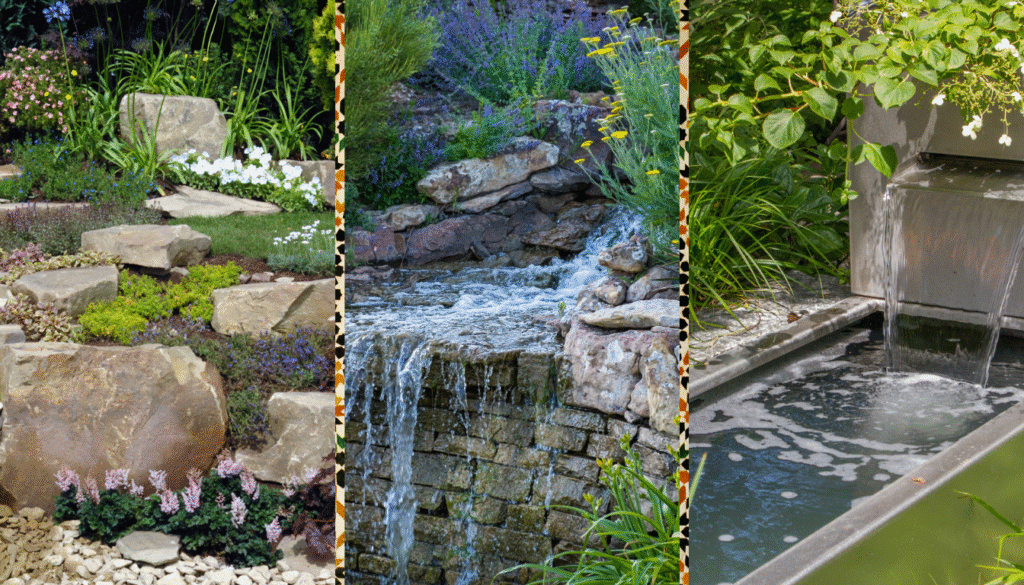
Finding Symbolic Fountains and Pools in Public and Private Spaces
Exploring Moroccan cities, you’ll see fountains and pools in squares, mosques, and riads. These are often decorated with detailed tiles. They aim to bring calm. For example, the Najah National School in Marrakech has a stunning courtyard with a fountain, showing water’s role in design.
Understanding the Practical and Spiritual Significance of Water Elements
Water in Moroccan architecture has both uses. It provides water and cools areas. It also symbolizes purification and renewal. An architect once said, “Water is life, and its use in Moroccan architecture shows our culture and beliefs.”
“Water is a symbol of life, and its use in Moroccan architecture is a reflection of the cultural and spiritual values of the society.”
Water features’ importance is clear when we look at Moroccan design. Here’s a table showing different water features in traditional buildings:
| Type of Water Feature | Location | Significance |
|---|---|---|
| Fountains | Public squares, riads | Aesthetic appeal, tranquility |
| Pools | Riads, mosques | Reflection, spiritual renewal |
| Water Channels | Gardens, riads | Cooling, symbolic of life |
Understanding water features in Moroccan design shows the beauty of Islamic influences. It highlights the richness of Moroccan design styles and traditional Moroccan buildings.
Regional Variations in Moroccan Architectural Styles
Exploring Morocco, you’ll see different architectural styles in each region. This shows the country’s rich history, cultural mix, and geography.
Northern Distinctive Features: What to Look for in Fez and Tetouan
In the north, Fez and Tetouan stand out. They mix Andalusian and Arab styles. Look for detailed tile work, carved wood, and fancy plaster in their buildings.
Southern Architectural Characteristics: Marrakech and the Atlas
The south, with Marrakech and the Atlas Mountains, has its own style. You’ll see buildings in earth tones, lively markets, and grand kasbahs. Local materials like rammed earth and wood are common here.
Coastal Influences: Identifying Unique Elements in Essaouira and Rabat
Coastal cities like Essaouira and Rabat show European and Mediterranean touches. Look for wooden shutters, colorful doors, and a blend of Islamic and European designs.
| Region | Distinctive Features | Influences |
|---|---|---|
| Northern | Intricate tile work, carved wood, ornate plasterwork | Andalusian, Arab |
| Southern | Earth-toned buildings, vibrant markets, kasbahs | Local materials, Berber traditions |
| Coastal | Wooden shutters, brightly colored doors, mixed decorative elements | European, Mediterranean, Islamic |
Knowing about these regional styles can make your Moroccan trip even better. As you travel, you’ll see what makes each place unique.
Capturing the Beauty: Photography Tips for Moroccan Architecture
To truly capture the essence of Moroccan design, photographers must consider timing, lighting, and perspective. Moroccan architecture is renowned for its intricacy and grandeur, making it a photographer’s paradise.
Best Times and Lighting Conditions
The golden hour, just before sunrise and after sunset, offers soft, warm light. This light enhances the textures and colors of Moroccan buildings. Avoid harsh midday sun, as it can create unflattering shadows and highlights. Overcast days can also provide a diffused light ideal for capturing detailed work without harsh contrasts.
Recommended Angles and Perspectives
Experiment with different angles to add drama to your photos. Shooting from low angles can emphasize the grandeur of minarets and tall structures. Getting up close can highlight the intricacy of Moroccan artistic elements such as zellige tile work and carved wood. Don’t be afraid to explore unique perspectives, like reflections in water or through archways, to add creativity to your shots.
Conclusion: Embracing the Timeless Beauty of Moroccan Design
Exploring Moroccan architecture and art takes you into a world where history and culture meet. The medinas, mosques, and riads show the country’s rich heritage. They reflect a mix of Berber, Arab, and Andalusian styles that are unique to North Africa.
Moroccan design is known for its bright colors, detailed patterns, and ornate details. It’s a feast for the eyes. From the grand Hassan II Mosque to the calm courtyards of riads, each piece tells a story of skill and tradition.
Appreciating Moroccan architecture art is more than just looking at buildings. It’s about experiencing a culture that values its heritage and beauty. Whether you’re walking through lively medinas or enjoying a quiet riad, Moroccan design’s timeless charm will stay with you.

